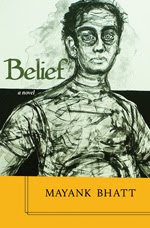Thursday, June 17, 2010
Two events, two stars and a good time
Both Lawrence Hill and Romila Thapar are stars and unquestionable genuises.
Hill is an authentic Canadian literary star.
Romila Thapar is an iconic historian.
On June 7 Pen Canada’s Ideas in Dialogue series had Hill discuss his childhood, boyhood, youth with another writer Charles Foran.
As with most grown men, Hill considers his father Daniel Hill to be a major influence on his life. He spoke animatedly about his life and times – a journey with his father to Washington DC when he was growing up, and surprisingly, the fact that for a brief time when he was really young, he was acutely embarrassed of his mother’s white skin.
Soft-spoken and articulate, Hill was nevertheless always careful and measured in his responses; sometimes a bit too careful and not spontaneous enough in an informal conversation.
McNally Robinson’s cavernous bookshop was brimming with an enthusiastic audience comprising interested readers and eminent writers; among the latter was the redoubtable Katherine Govier, an epitome of graciousness. She autographed my copy of her latest novel The Ghost Brush and wrote, “With my congratulations on your writing.”
I didn’t quite realise the importance of Hill’s The Book of Negroes when I read it last year, and had unfairly compared it to Roots. Joyce Wayne argued with me and educated me on its importance and provided me the background to racial exploitation in Canada, and within that context the importance of Hill’s novel.
Then on June 14, I quietly sneaked out of my office to quickly go to Munk Centre to witness a conversation between Janice Stein and Romila Thapar (India’s Past and Present: How History Informs Contemporary Narrative).
Thapar touched upon several themes that are dominating the public discourse in India today. The dissonance between the belief that claims the pastoral Aryans to be the original inhabitants of the subcontinent and the largely commercial urban civilisation in Harappa; the Brahminical underpinnings of the colonial interpretation of Indian history; the generally ignorant view that Indian civilisation lacked a sense of time; the arbitrary categorisations of different eras of Indian history based on religion.
An hour passed by. The audience listened in rapt attention.
Many years ago, Romila Thapar’s A History of India (Vol. 1), introduced me to India’s fascinating history. Thapar is firmly on the right (left) side of the political struggle against the Hindu right in India. It was, indeed, an honour and a privilege to listen to her in Toronto.
Images:
Thapar: http://newshopper.sulekha.com/ptiimages/original700/romila%20thapar.jpg
Hill: http://images.theage.com.au/ftage/ffximage/2008/10/03/Lawrence_wideweb__470x323,0.jpg
Subscribe to:
Post Comments (Atom)






No comments:
Post a Comment